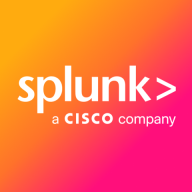

Splunk Observability Cloud and Amazon OpenSearch Service compete in the observability solutions category. Splunk appears to have the upper hand in data collection and real-time monitoring, while Amazon OpenSearch is noted for its cost-effectiveness and flexible database management.
Features: Splunk Observability Cloud is lauded for its advanced data integration, comprehensive dashboards, and custom alerts. Its real-time monitoring tools offer deep insights into application performance and security. Amazon OpenSearch Service is valued for its efficient use of native JSON, robust search capabilities, and integration ease with services like Kibana, supporting scalability and vast storage options.
Room for Improvement: Splunk Observability Cloud could benefit from enhanced integration with other tools, improved scaling features, and more intuitive navigation. Its pricing and automation features also need refinement. For Amazon OpenSearch Service, there's a need to streamline configuration, boost real-time analytics, and expand documentation for seamless integration.
Ease of Deployment and Customer Service: Splunk Observability Cloud supports diverse deployments across on-premises, public cloud, and hybrid environments, offering flexibility. In contrast, Amazon OpenSearch Service focuses on public cloud deployment with simplified management. Both provide helpful customer service, but users note occasional delays with Splunk.
Pricing and ROI: Splunk Observability Cloud's pricing model can be expensive due to data ingestion costs, yet users often find the investment worthwhile for the capabilities offered, noting increased productivity and efficiency. Amazon OpenSearch Service is perceived as more cost-effective, aligning expenses with actual usage and delivering noticeable ROI, despite being slightly more expensive than self-managed options.
| Product | Market Share (%) |
|---|---|
| Splunk Observability Cloud | 2.0% |
| Amazon OpenSearch Service | 1.9% |
| Other | 96.1% |


| Company Size | Count |
|---|---|
| Small Business | 7 |
| Midsize Enterprise | 2 |
| Large Enterprise | 2 |
| Company Size | Count |
|---|---|
| Small Business | 20 |
| Midsize Enterprise | 10 |
| Large Enterprise | 43 |
Amazon OpenSearch Service provides scalable and reliable search capabilities with efficient data processing, supporting easy domain configuration and integration with numerous systems for enhanced performance.
Amazon OpenSearch Service offers advanced features for handling JSON, diverse search grammars, quick historical data retrieval, and ultra-warm storage. It also includes customizable dashboards and seamless tool integration for large enterprises. With its managed infrastructure, OpenSearch Service supports efficient system analysis and business analytics, improving overall performance and flexibility. Despite these features, areas like configuration complexity, lack of auto-scaling, and integration with Kibana require attention. Users seek enhanced documentation, better pricing options, and more flexible data handling. Desired improvements include default filters, mapping configuration, and alerting capabilities. Enhanced data visualization and Compute Optimizer Service integration are also recommended for future updates.
What features define Amazon OpenSearch Service?Amazon OpenSearch Service is utilized in various industries for log management, data storage, and search capabilities. It supports infrastructure and embedded management, analyzing logs from AWS Lambda, Kubernetes, and other services. Companies use it for application debugging, monitoring security and performance, and customer behavior analysis, integrating it with tools like DynamoDB and Snowflake for a cost-effective solution.
Splunk Observability Cloud offers sophisticated log searching, data integration, and customizable dashboards. With rapid deployment and ease of use, this cloud service enhances monitoring capabilities across IT infrastructures for comprehensive end-to-end visibility.
Focused on enhancing performance management and security, Splunk Observability Cloud supports environments through its data visualization and analysis tools. Users appreciate its robust application performance monitoring and troubleshooting insights. However, improvements in integrations, interface customization, scalability, and automation are needed. Users find value in its capabilities for infrastructure and network monitoring, as well as log analytics, albeit cost considerations and better documentation are desired. Enhancements in real-time monitoring and network protection are also noted as areas for development.
What are the key features?In industries, Splunk Observability Cloud is implemented for security management by analyzing logs from detection systems, offering real-time alerts and troubleshooting for cloud-native applications. It is leveraged for machine data analysis, improving infrastructure visibility and supporting network and application performance management efforts.
We monitor all Application Performance Monitoring (APM) and Observability reviews to prevent fraudulent reviews and keep review quality high. We do not post reviews by company employees or direct competitors. We validate each review for authenticity via cross-reference with LinkedIn, and personal follow-up with the reviewer when necessary.